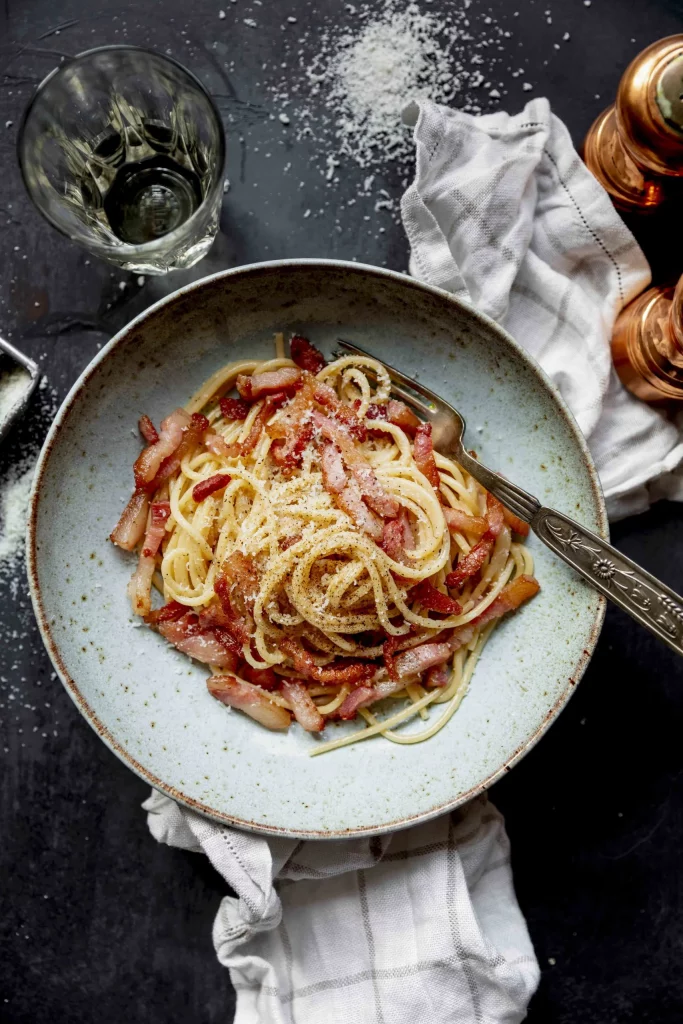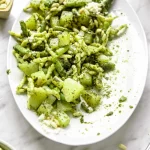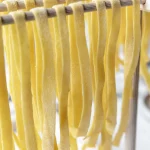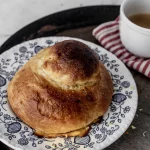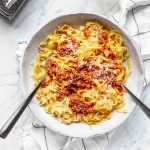Pasta alla Gricia is as rich as Rome, the city where it originated. It’s very easy and fast with simple ingredients and an incredibly delicious taste.
The origin of Gricia is still not very clear, but according to one legend, it might have been created in the village of Amatrice on the border between Abruzzo and Lazio a long time ago. When the shepherds and farmers looked after their animals and fields, they would bring lard, pasta, and ripe Pecorino cheese with them to eat as they spent long days in the fields working or grazing sheep.
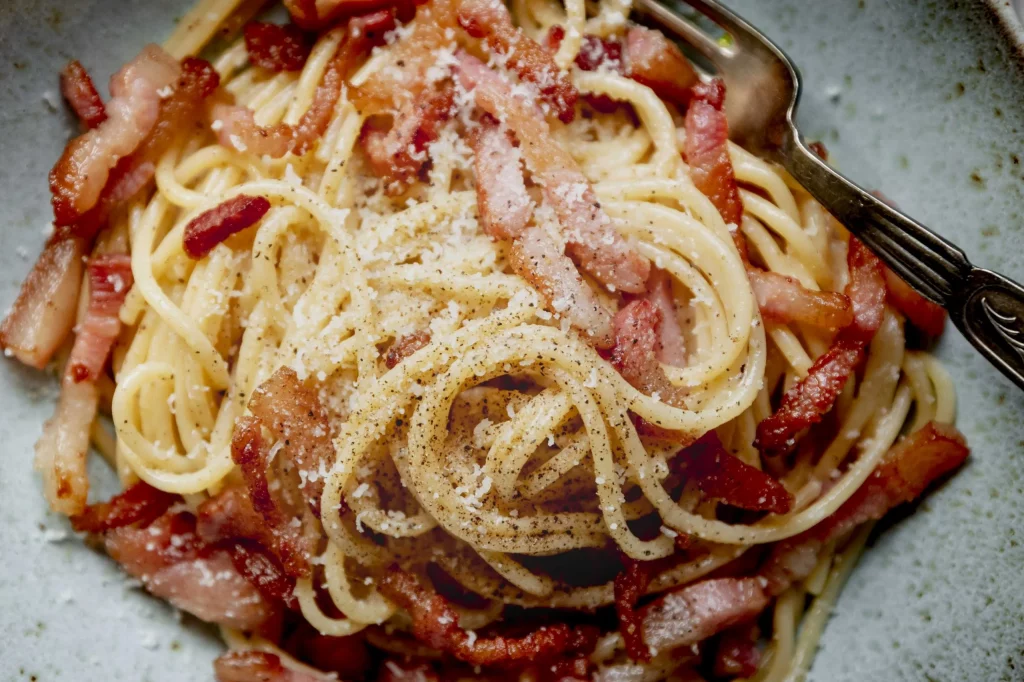
I had this dish last year when I went to Rome for a few classes in food photography. In the evening, my husband Enrico and I went to a very nice restaurant where we ordered this iconic Roman food. My Gricia was very peppery as the cook had very generously sprinkled it with black pepper. Believe me, it was worth the effort.
Both Amatriciana and Gricia call for guanciale, or cured pork cheeks, and Pecorino Romano cheese. Tomato sauce is the only difference with the Amatriciana, which is why gricia is also known as the “white amatriciana.”
Which pasta is best suited for pasta alla Gricia?
You may pair this tasty sauce with both long pasta, bucatini or tonnarelli, or short pasta, such as rigatoni. I usually make it with #12 spaghetti, linguine, or bucatini where the sauce clings perfectly.
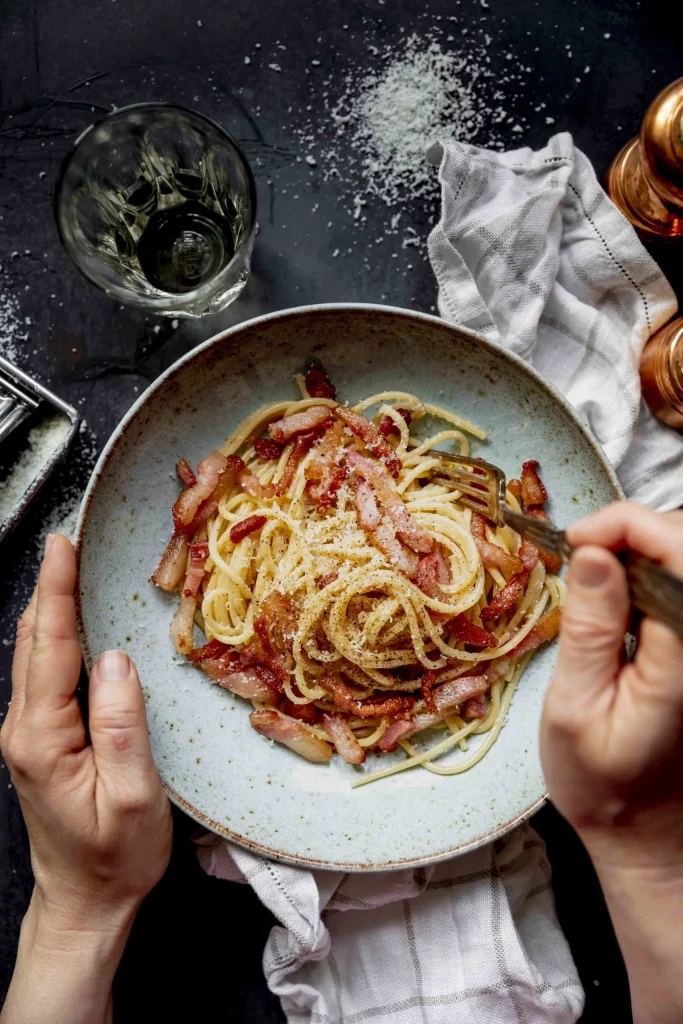
What is guanciale?
Guanciale comes from the cheeks and the neck of a pig that is at least 9 months old. It is seasoned and allowed to mature for more than three months; the superficial layer dries in a crispy, thin crust. If you cannot find guanciale, use pancetta, which can be found anywhere. In a pinch, if you can’t find pancetta, substitute bacon, which will also work instead.
In case the guanciale is not peppery enough, add black ground pepper in the pasta cooking water as it should be one of the main flavors in the recipe. Cook guanciale in a hot pan over medium-low heat and stir it with a wooden spoon so that it doesn’t burn. It should cook slowly without any additional oil. In order to bring out its flavor and release its fat before being tossed with the pasta.
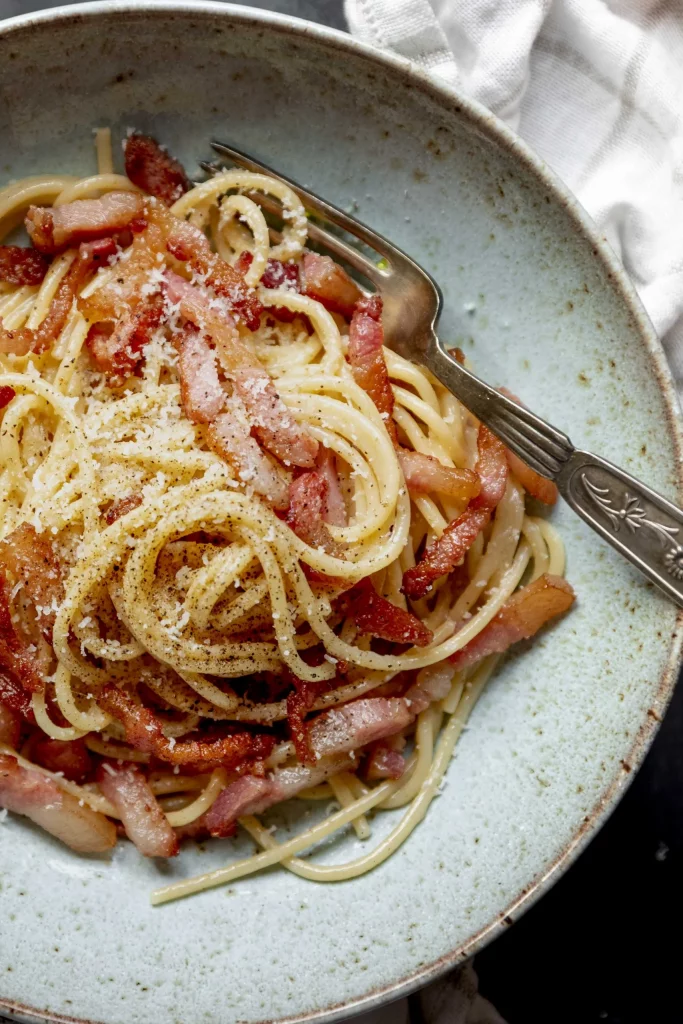
Essential hints for a successful recipe
- Buy only top-quality, possibly Italian products, especially the Pecorino cheese;
- Look for peppery guanciale because it is far tastier;
- Be careful when you cook guanciale as it must be crispy but not burnt;
- The recipe doesn’t call for any extra oil or cream: the spicy fat from the guanciale is enough;
- Save a little pasta cooking water to make the sauce creamy and silky;
- Finely grate the Pecorino to avoid any clumps. Let the cooking water cool down a little and make sure Pecorino is completely melted.
- Two methods guarantee a creamy and silky sauce. Put the Pecorino cheese in a cold pan, add the cooked pasta and then add some pasta cooking water, a twist of black pepper, and the guanciale. Stir well with a wooden spoon to avoid any clumps. You may also blend Pecorino, a very little pork fat, ground pepper, and a scoop of pasta cooking water with an immersion blender. Pour the cream onto the pasta and toss until it is evenly coated. Add the guanciale and more pepper.
Best Italian Pasta alla Gricia
Ingredients
- 4 cups of number 12 spaghetti (400g)
- 2 ½ cups of guanciale, pancetta or bacon (350g)
- 3 cups of grated Pecorino Romano
- Salt and pepper
Instructions
- Cook the pasta in plenty of boiling salted water;
- Cut the guanciale or pancetta into small pieces;
- In a pan, brown the guanciale pieces over high heat until crispy but not burnt;
- Set the guanciale or pancetta aside and remove some of the fat with paper towels as the guanciale or pancetta will get crispier and will be tastier without all the oil.
- Cook the fat in the pan over medium-high heat and add a scoop of pasta cooking water;
- Simmer for a few seconds and add some ground pepper; then remove it from the heat;
- Two minutes before the end time stated on the pasta cooking instructions, drain the pasta with a mesh skimmer and add it directly to the pan with the guanciale fat along with a few scoops of pasta cooking water, which is rich in starch and makes the pasta creamier;
- Toss the pasta with the sauce;
- Add a scoop of pasta cooking water and sauté it over high heat; add half of the grated Pecorino, a little at a time;
- Sprinkle the mix with ground pepper and add another scoop of water;
- Add most of the remaining Pecorino; toss well until the pasta is evenly coated. Don’t worry if it doesn’t melt instantly; stir well with a wooden spoon. The heat of the pan and the starch of the water will turn the pecorino into a smooth delicious sauce.
- Garnish the pasta with the guanciale pieces and the remaining Pecorino and more pepper; serve it very hot.

